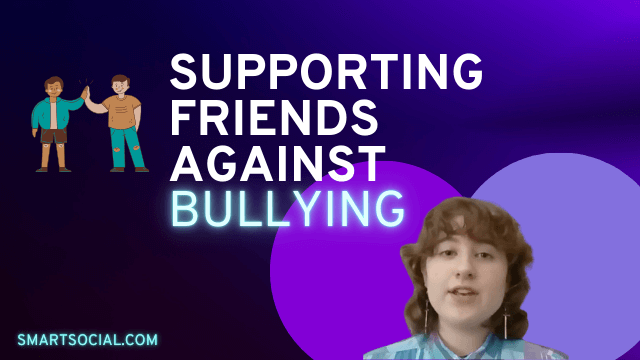Combat Online Bullying: Supporting Positive Student Behaviors on Campus and at Home
Green Zone App
(Click here to learn more)
Dangerous Social media challenge
(Click here to learn more)
Red Zone App
(Click here to learn more)
Gray Zone App
(Click here to learn more)
Cyberbullying has become one of the most serious threats to students’ mental health and safety today. Unlike traditional bullying, it doesn’t stop at the end of the school day; it follows students home through their phones, gaming platforms, and social media feeds. Just one post, message, or image can unfairly hurt a student’s reputation, undermine their confidence, and affect their well-being. Understanding what cyberbullying really looks like, how it differs from other online disagreements, and how parents and educators can respond is the first step toward prevention. This guide will help parents recognize the signs, support students who are struggling, and create safer digital spaces where kindness, not cruelty, thrives.
Educators and parents:Guide your students' reflection and discussion with this student worksheet. (Log in to your Google account and select File-->Make a Copy)
Full Event Replay (Parent video)
What is cyberbullying?
- Cyberbullying is when someone deliberately and repeatedly harms or harasses someone online via social media, text messages, gaming, or other online platforms
- There is often a power imbalance, which can be physical, social, or intellectual
- There is an intent to harm with cyberbullying, meaning it is not an accidental offense
- True bullying is ongoing and not a one-time incident
- 58% of middle and high school students have personally experienced cyberbullying (Source: cyberbullying.org)
What is not considered bullying?
- Accidental harm: When someone accidentally bumps into you in the hallway or during sports, it's not always bullying. Bullying involves intentional harm
- Single disagreement: A one-time argument or disagreement (online or in person) with a classmate, even if it's heated, doesn't qualify as bullying. Bullying is repetitive and targeted
- Not being chosen for a team or seeing a photo of an event you weren’t included in: Feeling left out because you weren't picked for a team or a group activity isn't always bullying. Bullying is about repeated and deliberate exclusion
- Joking among friends: Careless jokes among friends (online or offline) that end up being hurtful but weren’t meant that way usually don't constitute bullying. Bullying is about causing harm, distress, or fear
- Not sharing interests: A friend not wanting to hang out with you is not always bullying. Bullying involves deliberate and repeated hostile behavior
- People ignoring you: Sometimes your friends are going through a lot and can’t respond to you online. They may have struggles you don’t know about
Cyberbullying vs. in-person bullying
- Relentless and Inescapable: Cyberbullying can occur 24/7, making it impossible for victims to find a safe space, even at home
- Anonymous: Cyber bullies can hide behind anonymous names and fake profiles, which encourages more aggressive behaviors
- Wide Audience/Viral: Images, videos and messages can go viral, reaching a large audience and increasing humiliation
- Permanent Digital Footprint: Damaging posts, messages, and pictures leave a lasting record, even if posts are deleted, impacting the student’s future
What types of messages do cyber bullies send?
- Insults or name-calling - Messages that contain derogatory language aimed at belittling or shaming an individual
- Public shaming - Messages that aim to embarrass or humiliate an individual in a public online space such as a social media platform, including sending embarrassing, sensitive, or private messages
- Threats - Messages that include threats of harm or intimidation, attempting to instill fear in the victim
- Manipulation - Messages that try to control or coerce an individual into doing something against their will
- Harassment - A barrage of unwanted messages that may be aggressive, condescending, or offensive
- Identity theft - Sending messages while pretending to be the victim, often to ruin their reputation or relationships
What is the impact of cyberbullying?
- Mental Health: Cyberbullying is strongly associated with increased risk of depression, anxiety, and lower self-esteem
- Social Distress: Victims of cyberbullying report social withdrawal, isolation, emotional distress, and lack of interest in activities they used to enjoy
- Academic Performance: Bullied students may experience a decline in academic focus, engagement, and attendance; some may even drop out
- Physical Health: Cyberbullying can manifest as headaches, lack of sleep, diet changes, illness and decline in well-being
- Behavior Changes: Students engaged in cyberbullying may develop aggression, mood swings, anger, addiction, or risky behaviors
- Risk of Suicide: A child who is bullied is 4x more likely to report suicidal thoughts and self harm
Why do children bully?
- Exposure to an adult or influence who is aggressive or violent
- Feeling out of control. They look for power by controlling others
- Succumb to peer pressure for social acceptance and status
- Feeling insecure or have very low self-esteem
- Lack of empathy, emotional regulations or understanding
- They may be victims of peer bullying themselves
How can you avoid becoming a cyberbullying victim?
- Protect your personal information - Don’t make it easy for an online bully to target you. Keep your passwords and contact information private
- Think before posting - Don’t post anything online unless you are comfortable with everyone seeing it
- Choose your friends wisely - Only accept friend/follow requests from people you trust and know in person. Block anyone who is negative towards you
- Establish good online boundaries - Decide how you want to be treated, and speak up when those boundaries are crossed so things don’t escalate
- Focus on self-confidence - Showing confidence can often scare bullies away, but it can also help you recover from situations that would otherwise tear you down
What to do if you see cyberbullying (or experience it)
- Discuss online interactions with a trusted adult - Foster an environment where students can talk about their online interactions with parents or teachers so they don’t feel alone
- Don't respond or retaliate - If students are targeted, advise them not to respond or retaliate, as this can often make the situation worse
- Regularly check and clean up profiles - Have students review their online profiles regularly and remove anything that could make them a target
- Be an upstander, not a bystander - Encourage students to support peers who are bullied online and to report it to an adult
- Save the evidence - Encourage students to save messages or take screenshots of any bullying in case they need to report it
- Use reporting features - Teach students how to use the report features on social networks and online platforms to report cyberbullying
- Know when to disconnect - Encourage students to take breaks from social media and to disconnect from devices if they are feeling overwhelmed by online interactions
Dialogue Starters Around Cyberbullying
- “If someone ever said something mean to you or others online, would you feel comfortable telling me about it? I want you to know I’m here to help, not judge.”
- “I’ve noticed that you seem more withdrawn lately and upset after using your phone/computer. Would you like to talk about anything happening online?”
- “I’ve heard stories about kids struggling with mean online behavior—both on the receiving end and sometimes participating in it. If you ever find yourself in a difficult situation, know that we can figure it out together.”
- "Who are the adults or friends you trust enough to talk to if a situation online makes you feel uncomfortable?
- "What are some safe ways to respond if you see someone being bullied online?"
- "Have there been any times when you have felt bullied or uncomfortable by something that was said to you online?"
Signs Your Student is Being Bullied Online
If you notice a change in your student's habits then that might be a sign your child is being bullied online.
- Change in diet
- Sleeping more than normal or less than normal
- Academic changes
- Shows signs of aggression or increased agitation
- Change in habits
- Loses interest in activities they once enjoyed
- Increase or decrease in device usage
- Withdrawn, doesn’t want to talk
Steps for Parental Intervention
- Talk to your child - Have an open and supportive conversation about what’s happening and what your child feels the best solution would be
- Document the bullying - Keep a record of incidents, including dates, times, and descriptions
- Contact the school - Work with teachers and administrators to address the issue
- Professional support - Consider seeking help from a counselor or psychologist if your child is struggling emotionally
- Legal advice - In severe cases, if the bullying includes illegal activity, such as physical assault or sharing nude photos, legal advice might be necessary
- Empower your child - Work with your child to develop strategies to handle bullying and to boost their confidence and resilience
Support Services for Students Dealing with Cyberbullying
- National Suicide Prevention Lifeline Crisis Chat: https://988lifeline.org/chat/
- Stop Bullying Now Hotline: 1-800-273-8255
- No Bully Help Hotline: 1-866-488-7386
- LGBT National Youth Talkline: 1-800-246-7743
More resources for parents, students, & educators
- What is Swatting? What Parents and Educators Need to Know
- Cyberbullying Prevention Tips: What Students & Parents Need to Know
- Identifying Bullying Tactics: 5 Experts Weigh In
- How to Handle Cyberbullying (15 Experts Share Tips for Your Family)
Conclusion
Cyberbullying is a serious issue that is impacting the lives of many students today. Recognizing the tactics used by cyberbullies and having a clear understanding of how to support students who are being bullied online is crucial. Parents and educators need to keep the lines of communication open with students to support them and help them respond to bullies in a healthy way. Cyberbullying is an ongoing problem. It will require vigilance, empathy, and a collective effort to create safer spaces online.
Protect your family and enter for a chance to win cool prizes
Become a member or log in to learn more on this topic
Protect your family and enter for a chance to win cool prizes

., start learning from this page to earn points!*
Hello, I'm Josh, the founder of SmartSocial.com.
Don't leave this page until you fill out our feedback form that will appear after you learn from the resources...
Here are some of the latest resources at SmartSocial.com
Become a Very Informed Parent (VIP) to get our social media suggestions in your email every Tuesday & Thursday.



Hello, I'm Josh, the founder of SmartSocial.com. Protect your family by taking my 1 minute quiz
This quiz will help you understand how safe your family is


Schools & Districts: Partner with us to protect your community online
Our remote presentations (and website) teach over a million parents and students each year how to be safe so they can shine online. We teach students how their accounts can be used to create a portfolio of positive accomplishments that impress colleges and employers.


Join Our Smart Social Podcast
each week on iTunes
With over 500 episodes, Josh Ochs interviews psychologists, therapists, counselors, teachers, and parents while showing you how to navigate social media to someday shine online.
Listen on:








.jpg)
.jpg)

.jpg)
.png)